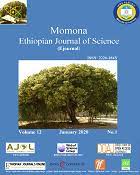Effect of Polymerization Variables on the Electrical Conductivity of Polyaniline Functionalized Cotton Textiles
Keywords:
Conductivity, Cotton fibers, Functionalization, Oxidation, PolyanilineAbstract
Polyaniline functionalized cotton textiles were synthesized via in situ oxidative polymerization of aniline using hydrated ferric chloride solution in acidic media. Variation in conductivity was examined against polymerization variables such as amount of aniline, oxidant, reaction media, and time. Effects of polyaniline functionalization on the structural features of cotton textiles at optimum polymerization conditions were screened by FT-IR, TGA, and SEM instruments. FT-IR profiles at 1440 cm-1 and 1560 cm-1 proved the existence of benzoid and quinoid rings within the cotton structure, which confirmed the introduction of polyaniline in its conductive form, emeraldine salt. Thermal studies revealed the existence of polyaniline, which further enhanced the thermal stability of cotton textiles. SEM microstructure also proved the formation of nonuniform surfaces with a considerable amount of debris, buds, and channels due to the inclusion of polyaniline. Polyaniline functionalization has shown substantial enhancement of electrical conductivity by changing insulating cotton to semiconductor. At optimum polymerization variables ([aniline] = 1 M, [oxidant] = 1 M, [acid] = 0.5 M, and time = 24 hrs), maximum conductivity was registered at 7.63 X 10-3 S/cm, which is equivalent to the conductivity of semiconductor materials.

